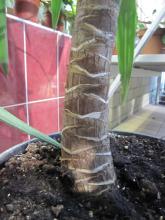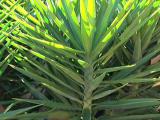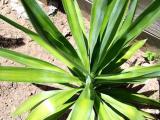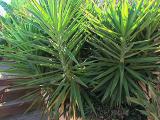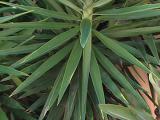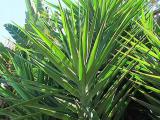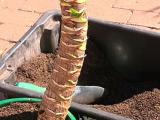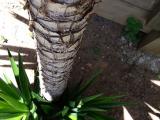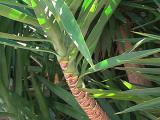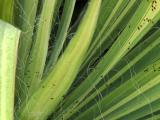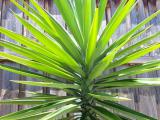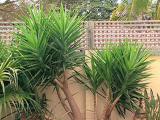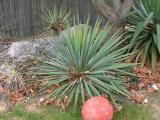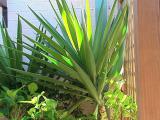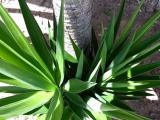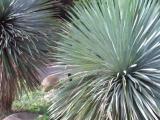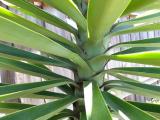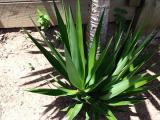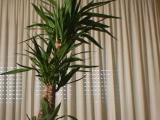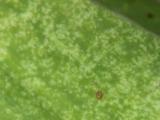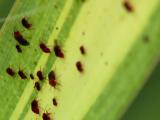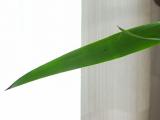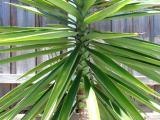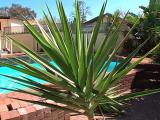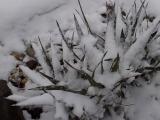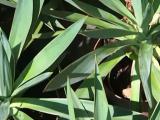Yucca is a desert plant favourite with the majority of gardeners. It can be kept indoor as well as grown outside in flower beds that ornament the garden. To keep the plant healthy the...
-
Images of Yucca plant and pictures
Click here to see all articles about Yucca
Yucca is a plant known for clusters of white flowers and green sword-like leaves. Its blooming is bird-attractive during fall and summer. However, these are only common features, as there are various species available.
Though plants are native mostly to desert sections in South, North, Central America and West Indies, you can easily find them in homes and gardens all over the world. All that is required is your knowledge of proper care instructions. Personally I know much about the entire process. Some tips were suggested by my friends, and I’m ready to share them.
Yucca Plants: Perfect Species for Inside and Outside Growing

As a rule I hear the same everywhere – ‘yucca plants are easy to maintain, and that’s why I’ve chosen them.’ However, when it comes to reality, you should know the fact that they are also pretty susceptible to different problems, diseases and even pests. So, choosing the species only by yucca images is wrong. Personally I give preference to Bright Edge and Spanish Dagger. You can find pictures of them.
Bright Edge has spiny-tipped leaves that are 2-feet long and are edged with threads that are curly. What I like the most is that all leaves are banded with creamy yellow. During hot summer months there appear white flowers. Spanish Dagger has evergreen clumps of stiff. When its leaves get mature, they arch.
✔ We Released The Yucca HandBook
CLICK HERE TO LEARN MORE >>
Things You Don’t Know about Yucca Uses
As far as I know, there are ornamental plants available. There are different types of yucca that have edible parts, including stems, leaves and fruits. In addition, yucca uses are different; it is mostly added to shampoos for Native America rituals. Its leaves are used in fires started through fiction due to their low ignition temperature. Filamentosa type is regarded to be a ‘meat hunger’, because its tough fibrous leaves and sharp spiny tips are commonly used in puncturing meat for forming a loop hung in smoking houses.
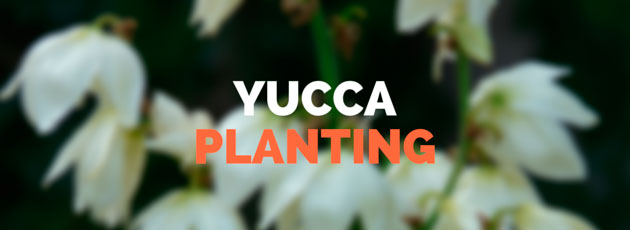
Planting Yucca. What’s Better: Seeds or Roots?
I believe that working with a yucca root is easier. But some of my friends are always ready to deny it. Well, everyone chooses the most appropriate option. Let’s see how to plant a yucca in each case.
If you go my way and choose roots, follow these steps:
- Choose a place where it is full sun to ensure the best outcome. This plant doesn’t like partial shade.
- Before planting yucca, check the soil for good drainage. If there is any need to promote it, do some slope to the area. Otherwise, your flower will not survive in wet ground and will rot pretty fast.
- Take a shovel and dig a hole. Inspect the soil type.
- Afterwards choose the location, add some sand in order to implement the soil. For this purpose you'd better dig a hole twice as deep and twice as wide as the root ball. Place soil into a large container, and then add about 50% of sand. Be especially attentive to the soil type that has a heavy clay base. In this case you'd better add more sand.
- Place the root ball on the top of the soil and make sure it is straight and centered. Fill in sand around the plant to the surface level.
Usually I also add some water. After this I know that I won’t need to water it for 2-3 weeks after planting.
As I rarely work with seeds I asked a friend of mine to tell me about the procedure. He says it’s as simple as that: just spread them on the top of the potting mix. For better results they should be spread nearly three inches apart. Then cover them with sandy soil. Make sure the layer is very thin. Water the seeds every 3-4 days. This will keep them barely moistened. Over-watering will cause rotting.
What about propagation? It should be propagated by removing either small plants or pups which normally appear around ‘the mother’. I suggest using a sharp garden spade for digging up the pup and planting it in a small pot.
When to transplant it? The best season is autumn for those species that are in the area with hot summers and pretty mild winters. This gives enough time for establishing before dry months. In case you live in the area with cold winters, transplanting should take place in spring after frost.
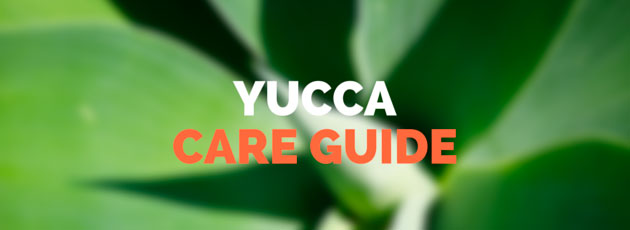
Yucca Care Guide and Basic Growing Tips
How to grow yucca? The basic requirements are the following:
- bright light
- if kept in house, 3-5 feet of a window
- sandy soil
- good drainage
Let’s check the details. If this is an indoor plant you should keep it in high or bright light settings. I usually allow the top 1/3 of soil to dry out before I start watering it again. If it happens so that the setting doesn’t have much light, nearly ¾ of the soil should dry down between the watering. If possible, use sub-irrigation to water house plants.
While watering, don’t let your plant sit in a saucer of water, which accumulated in the bottom. Be careful, as this extra water encourages rotting. Additional tips on growing are:
- providing intense light at least once a day
- using heavy pots, if there’s no such chance, place rocks on the top of soil in order to keep pot upright
- water regularly, because if the plant doesn’t get enough liquid, its leaves will soon turn yellow and then brown
In winter: I always try to provide lower temperatures. Once I didn’t and some of my plants didn’t survive.
In summer: I leave them outdoors allowing getting more light, getting used to high heat and benefiting from fresh air. About 3-4 hours a day they are in direct sun. As this makes the soil dry out faster, I water it several times a week. This is basic caring for yucca.
✔ We Released The Yucca HandBook
CLICK HERE TO LEARN MORE >>
Do not forget about pruning. With most plants this procedure stands for cutting the blooms and branches, while now we are speaking about cutting the trunk. For those species that grow outside this process is not necessary.
How to prune? The best time for it is spring. It should be done before the growing season:
- I determine a halfway mark on my plant and take a cutting device. Usually it is a saw.
- Using it, I lop off the leafy section that is on the top on the trunk.
For most people cutting at a halfway point is too difficult as it makes the trunk too short. Well, there’s no single rule, so you can cut a little bit higher. This is it.
For additional care for yucca you can also cut off blooms and leaves. Removing them can be done regardless of season, as there is no need to get worried about damaging the plant. So, when I see that the bloom is dying or old, I cut it off.
If you remove stalks, you can also use sharp shears and cut the stalk at about 4 inches above the place it grows out of the major stem. This is how to care.

What Diseases and Pests Plants Are Susceptible To?
Now that you know about the cultivation process, it’s time to get acquainted with diseases or pests risks. Among typical problems you can find leaves curling and yellowing, brown discoloration and lesions, stem rotting, etc. Let’s see what the reasons are and how to cope with them.
- Gray Leaf Spotting
This is a quite common problem for many plants. Spotting appears in old leaves: you notice legions fray in color. When the problem affects my yucca I remove the infected areas and apply a fungicide.
- Stem Rot
Once I had the problem like this. Besides, rotting of the stem is a common issue for most homeowners. The main cause is a bacterium that causes the stem have mushy discharges. The odor is really unpleasant, believe me! To avoid this you should use a proper potting soil and sterilized pots, while planting the cuttings.
- Brown Spots
What about brown spots? This problem is of 3 centimeters in diameter. Its basic characteristic feature is a purple border. At first you don’t notice anything. Then you just try not to pay special attention to tiny clear zones on some old leaves. Finally, they turn yellow and brown, when mature. They are scattered all over the surface of those leaves that are at the bottom. And though the problem is rather serious, it can be removed. All you must do is remove all affected and old leaves and then sprinkle the remaining ones with a fungicide. This is helpful in preventing the re-occurrence of brown spots.
After getting acquainted with basic diseases you’ll be happy to know that yuccas are resistant to the greater part of pests. The infestation of mealy bug or scale is perhaps the worst that can happen. If you see any problem, make a special solution, mixing water and liquid dishwashing product. Spray the plant. If it doesn’t work, you may freely use any commercial insecticide.
✔ We Released The Yucca HandBook
CLICK HERE TO LEARN MORE >>
If you have read this, you can stay cool: now you know all the basic information on planting, growing and caring for yucca. Choose any types you like to make your garden and house bloom all year round.
Yucca is a hardy plant which blooms with gorgeous white flowers in summer. It can be planted in the garden and grown inside, capable of...
A few days ago saving yucca of my sister-in-law became the most important matter for me. My relative went to visit her friends for a couple of weeks and asked me to take care of her...
There are no branches on yucca cane. Instead of them there are long, narrow leaves growing right from the stems. Sometimes there can be yucca cane drooping.
Generally it is...
“Is yucca edible?” – asked my little brother once. Honestly, I have never thought about my houseplant in this way though I knew that there are several yucca uses. For...
A lot of people ask those with a better green thumb what soil to use for yucca. In its native environment it grows in sandy soils. Nevertheless it can tolerate all the other types of...
Every two years it is necessary to repot the plant. Repotting is essential because the soil tends to harden over the time and as a result the plant doesn’t receive all the needed water...
There are over 50 species in the genus Yucca. Yucca kind identification is not a simple task but if you are attentive enough, you will notice that each type of this plant has distinctive...
Although yucca is a sturdy plant and requires little care, it is not an exception and is prone to several diseases and pests like any other plant. The problems that can occur are yellow...
If you want to find growing tips on Yucca elephantipes (synonym – Yucca gigantea) in an old plant book, it is quite unlikely you will find this plant mentioned there. It has become a...
Sometimes yucca plants can overgrow their boundaries or probably you’ll want to share this species with your friends ( separating young offshoots from a mature mother plant and...
I have found some yucca images recently. The plant is terrific! The foliage is leathery, sword-shaped. In the very centre there is a gold ending. The plant was depicted blooming with...
Yucca is an evergreen species which blooms once every year from the middle of summer when days are still long to the beginning or mid fall. It produces white, sometimes pale yellow bell-...
Yucca is a succulent plant though there are still hot discussions about that. Some people claim that there exist succulent types of yucca (for example, yucca elephantipes) but it is more...
A lot of plants kept in houses or grown in the garden may be harmful to pets. Is the yucca plant poisonous too?
Actually, yes, it is. Some of the species are not dangerous but in...
Yucca rostrata “Blue Velvet” is a magnificent tall plant with a single trunk and long stiff blue-green or blue-grey leaves with yellow margins. Specimens with branches are quite rare....
It’s hard to imagine but one of the most popular and trendy houseplants nowadays – Yucca – has not bin such a hit until recently. This plant belongs to the family Asparagaceae and is...
Yucca plant is recognizable by its sword like leaves and white flowers. It is widely spread and is frequently grown as an ornamental plant. No wonder people are interested in how to...
Yucca brevifolia, known as Joshua tree, is the largest species in the genus Yucca native to the Mojave Desert. Its height ranges from 15 to 40 feet. There are many interesting facts...
Yuccas are versatile plants that can grow in full sun, thrive in full or part shade and enjoy the light indoors. They look exotic and trendy and that is why so many people keep it as a...
Yucca is a desert plant which can be grown both outdoors and indoors. Seed dispersal can be done by splitting, by water, by wind, by animals and by human. If you have decided to...
Yucca is generally considered to be a healthy plant. It is susceptible to infestations of several pests though. There is a question about yucca that people ask more frequently than...
Yucca is a plant which is able to thrive even with little maintenance. However, it is susceptible to several diseases that can damage the plant. Also a “dying yucca” can be a result of...
If there is no proper spacing in your garden anymore, it’s high time you did some pruning, This process may seem a drastic one, but it is a perfect way of controlling the height of the...
Planting a yucca some time ago was a real joy. But if now it have become a nuisance and you are interested in how to remove a yucca from your garden, be ready to struggle with it a lot...
I noticed waxy, oval, white spots on yucca leaves once. I tried to rub them off and after I did that, the area where the spots used to be became...
There are several varieties of yucca plants. Some of them easily adjust to winters and can survive freezing temperatures. Some cannot withstand even a light frost. But even the hardy...
Yucca gloriosa is a flowering plant with bluish or grayish green sword-like stiff leaves and several stems. It is native to the southeastern states of the USA and has a lot of common...
You won’t even need a yucca care guide to find the information about how to water this yucca plants. This species is a set-and-forget houseplant...






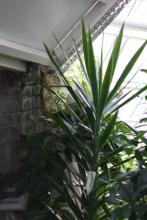 ,
, 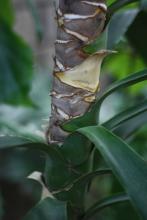 ,
, 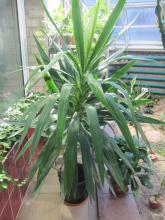 ,
, 